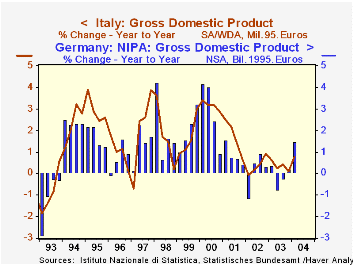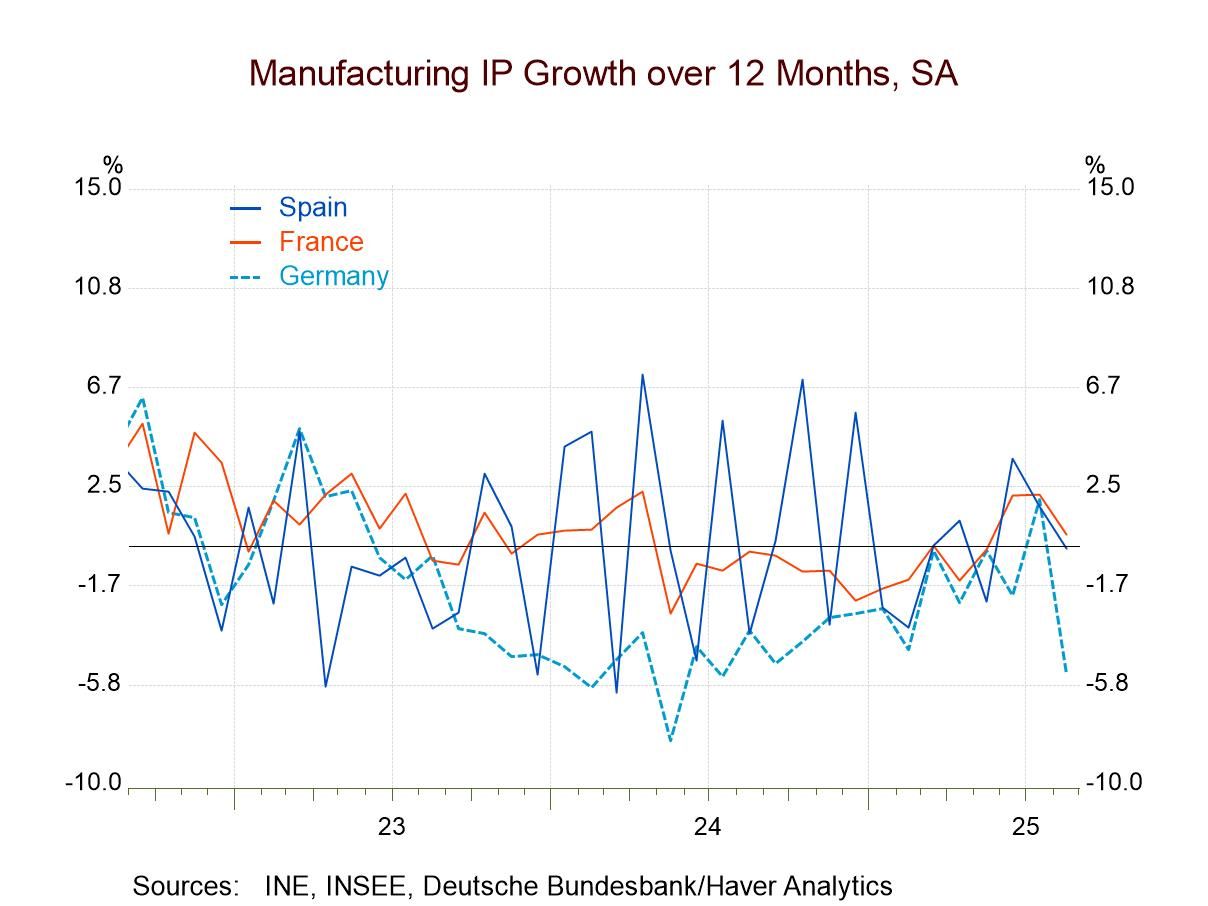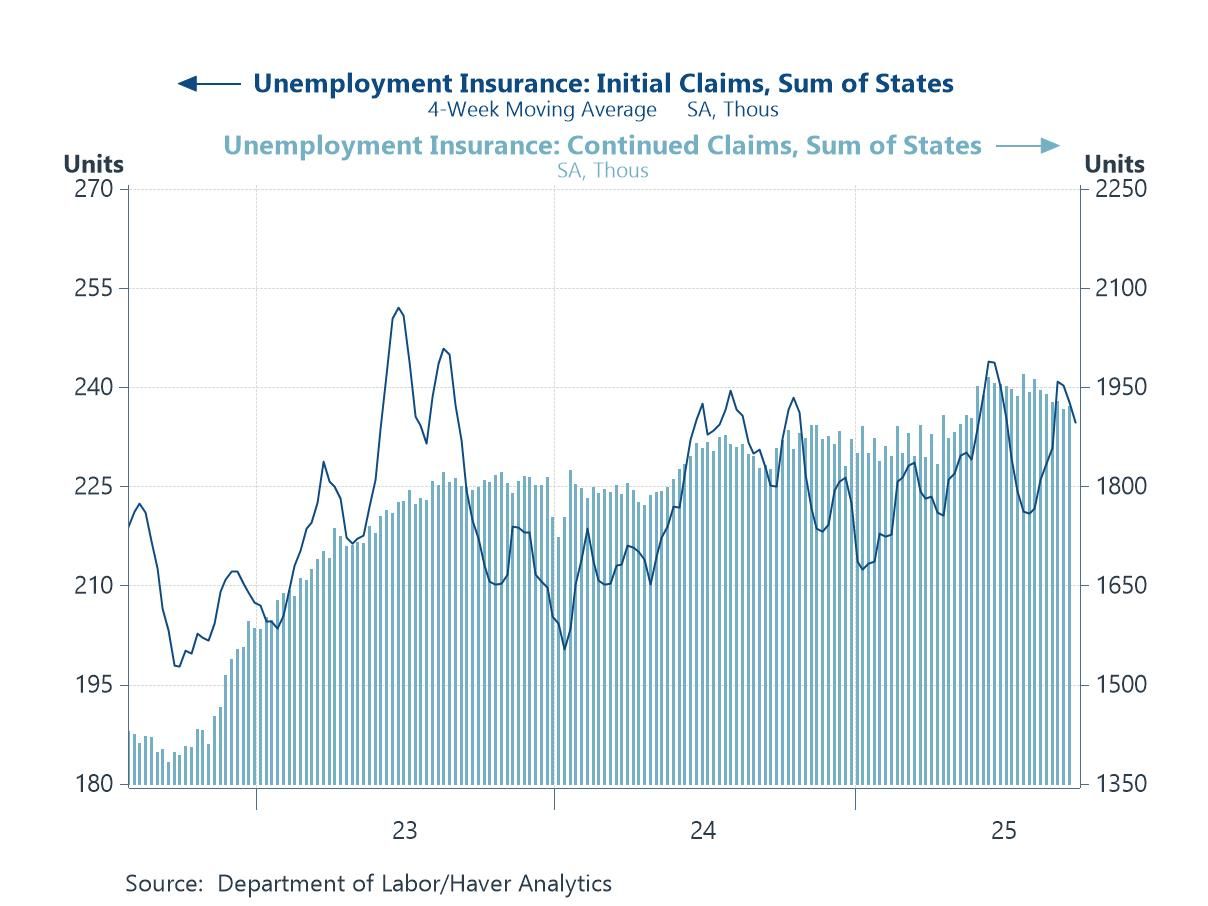 Global| Apr 13 2004
Global| Apr 13 2004Good Q1 Gains in GDP in 4 European Countries
Summary
After long periods of sluggishness, the economies in Europe seemed finally to be recouping some strength during the first quarter. Reports for Germany, France, Italy and the Netherlands all showed decent growth in Q1, in some cases [...]

After long periods of sluggishness, the economies in Europe seemed finally to be recouping some strength during the first quarter. Reports for Germany, France, Italy and the Netherlands all showed decent growth in Q1, in some cases the best performances in three years or more.
Germany, for example, had its largest quarterly increase since Q1 2001 and the best year-on-year gain since then as well. German statisticians did not report any details today, but their commentary indicates that foreign demand is the driving force. This corroborates our analysis of the German manufacturing sector a week ago, which shows notably larger increases in foreign orders than in domestic ones.
France, in its "flash" estimate, reports GDP up 0.8% on the quarter, the largest rise since Q1 2002. Year-to-year growth appears to be 1.8% (calculated by applying the new Q1 percent change "flash" to the Q4 2003 level of GDP), the best since mid-2001. Domestic demand may have helped in France, where separate data show that household spending on manufactured goods grew 2.0% on the quarter (quarterly rate).
In Italy, GDP increase 0.43% in Q1 over Q4 and 0.8% over the year-earlier period. Its recent behavior is similar to its neighbors, as seen in the graph.
The Netherlands is also seeing a turn toward healthier growth. In the most recent period, the advance has come in private capital spending. This is the only country reporting GDP details today, and they show a sharp 2.2% quarterly gain in business investment. Government investment also rose, but more slowly. Consumption edged lower overall with nearly offsetting moves in private (up) and government (down). Exports fell, although they are up 1.4% from a year earlier.
All of these countries' economies showed improvement in Q1, and the driving force seems to have been different in each one. The gains remain small compared to the boom times of the late 1990s, but the diversity of sources for the growth is encouraging, especially in the face of the common burden of rising energy costs.[Details for Germany, France and Italy will be reported by their respective statistical agencies over the coming two weeks.]
| Percent Changes | Qtr/QtrYear/ Year | 4th Qtr/4th Qtr||||||
|---|---|---|---|---|---|---|---|
| 1st Qtr 2004 | 4th Qtr 2003 | 3rd Qtr 2003 | 2003 | 2002 | 2001 | ||
| Germany | 0.44 | 0.26 | 0.21 | 1.47 | 0.22 | 0.34 | 0.42 |
| France | 0.80 | 0.67 | 0.69 | 1.80e | 1.19 | 1.37 | 0.44 |
| Italy | 0.43 | 0.04 | 0.41 | 0.80 | 0.12 | 0.91 | 0.64 |
| Netherlands | 0.43 | 0.48 | 0.00 | 0.77 | -0.37 | 0.13 | 0.51 |
Carol Stone, CBE
AuthorMore in Author Profile »Carol Stone, CBE came to Haver Analytics in 2003 following more than 35 years as a financial market economist at major Wall Street financial institutions, most especially Merrill Lynch and Nomura Securities. She had broad experience in analysis and forecasting of flow-of-funds accounts, the federal budget and Federal Reserve operations. At Nomura Securities, among other duties, she developed various indicator forecasting tools and edited a daily global publication produced in London and New York for readers in Tokyo. At Haver Analytics, Carol was a member of the Research Department, aiding database managers with research and documentation efforts, as well as posting commentary on select economic reports. In addition, she conducted Ways-of-the-World, a blog on economic issues for an Episcopal-Church-affiliated website, The Geranium Farm. During her career, Carol served as an officer of the Money Marketeers and the Downtown Economists Club. She had a PhD from NYU's Stern School of Business. She lived in Brooklyn, New York, and had a weekend home on Long Island.





